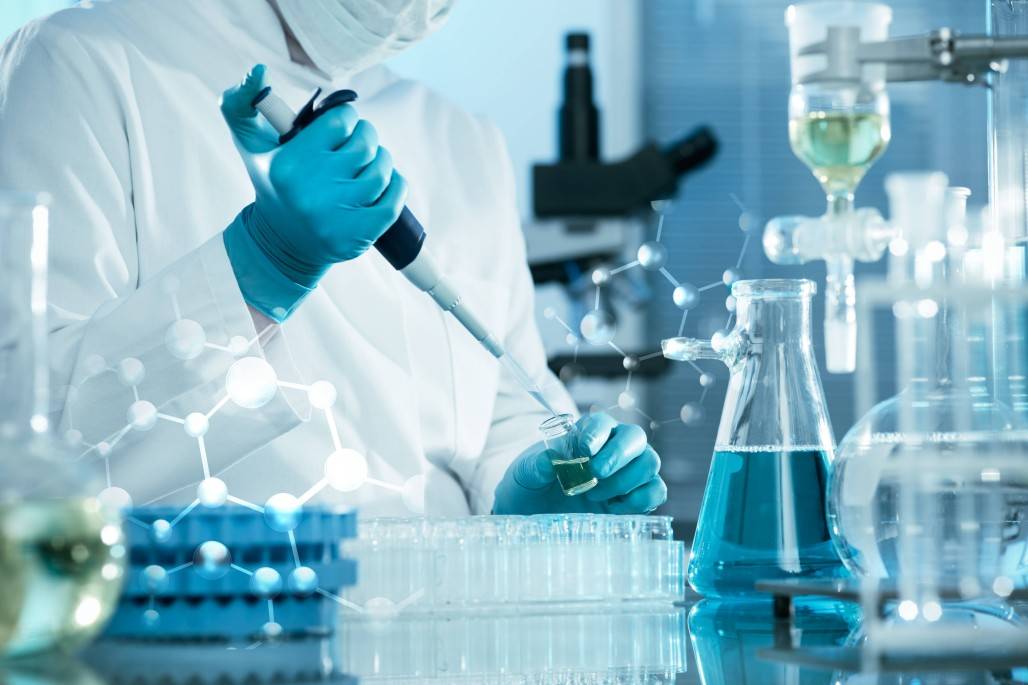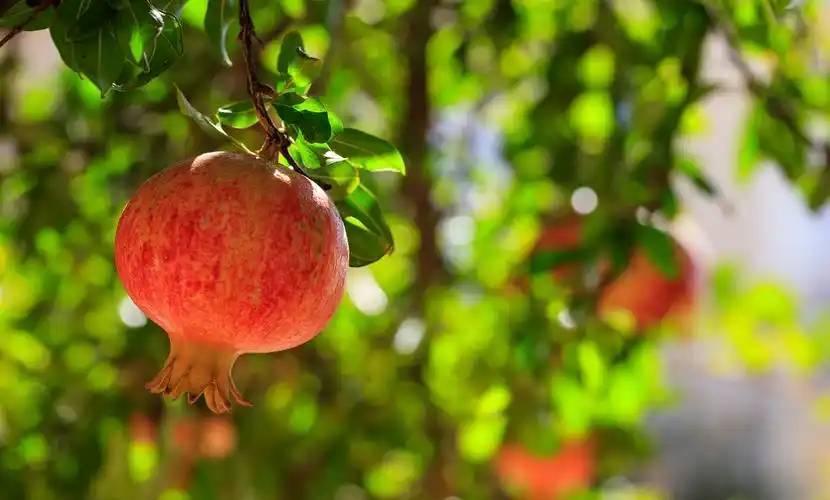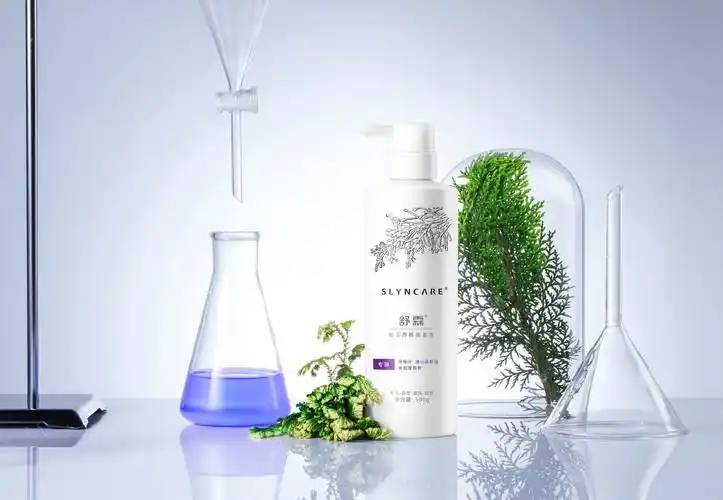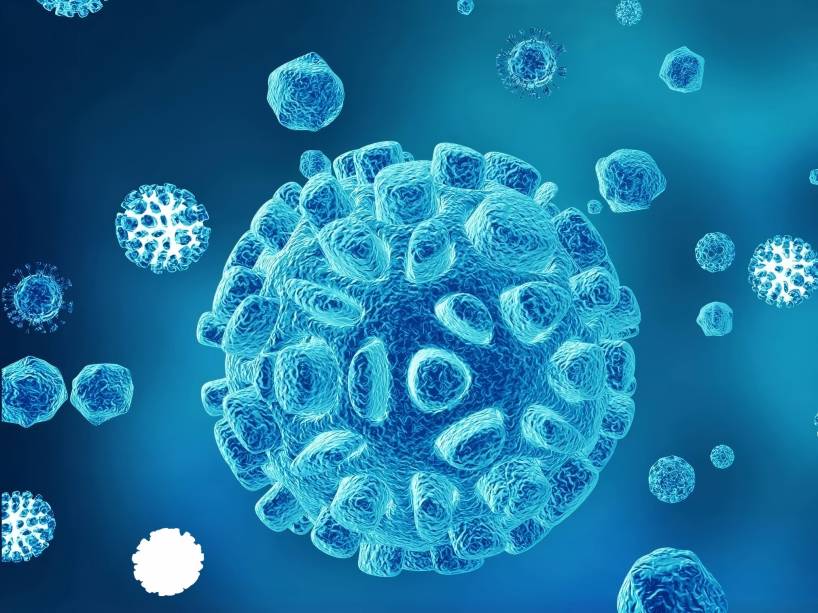What Are the Active Ingredients in Pomegranate Peel Extract Powder?
Pomegranate (Punica granatum L.), also known as pomegranate, or Tianjiang, is a woody plant in the family Punicaceae. It is widely cultivated in China and has abundant germplasm resources. The Compendium of Materia Medica records that “pomegranate is also known as Tianjiang (天浆), which can stop diarrhea, resolve blood stasis, quench thirst, and dispel internal heat.” Its fruit is not only rich in a variety of vitamins, minerals, organic acids, and proteins [1], but also contains a wealth of phenolic and flavonoid active ingredients. Pomegranate polyphenols are the sum of the hydroxylated polyphenolic compounds contained in pomegranates, and their content is most abundant in the pomegranate peel.
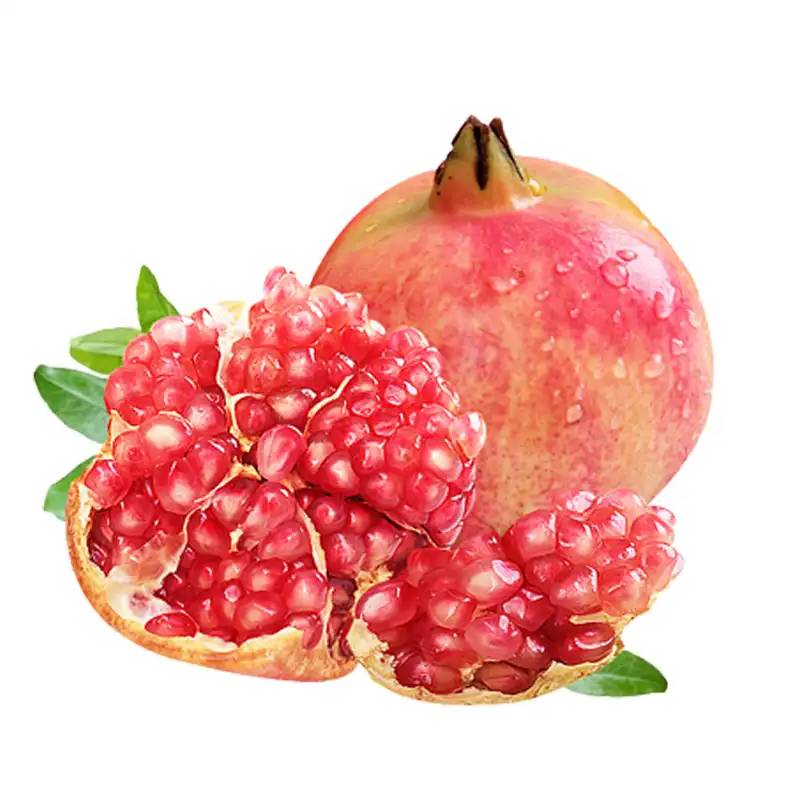
Pomegranate peel extract powder polyphenols mainly include various compounds such as gallic tannin, ellagic tannin, ellagic acid, chlorogenic acid, gallic acid, catechin, epicatechin, anthocyanin, ferulic acid and quercetin [2], accounting for about 10% to 20% of the dry weight. Studies have shown that pomegranate peel polyphenols have various functions such as antioxidant [3-4], antibacterial [5-6], antitumor, cancer prevention [4,7], anti-atherosclerosis, and prevention of cardiovascular disease [8-9]. They are widely used in medicine, anti-aging cosmetics [10], and food. This article reviews the research progress of the polyphenol active ingredients in pomegranate peel, the commonly used separation and extraction methods, and their pharmacological effects, providing a reference for the research, development and application of polyphenols in pomegranate peel.
1 Types of pomegranate peel polyphenols
Polyphenolic compounds have complex and diverse chemical structures. They have a benzene ring as their basic skeleton, with multiple hydroxyl groups substituted on the benzene ring. The molecular weight distribution ranges widely, from low molecular weight simple phenols to polymerized tannins with a molecular weight of thousands of Daltons [11]. The existence forms of natural plant polyphenols are even more complex, so there are many classification methods. Initially, Haslam classified tannins into two categories: hydrolysable tannins and condensed tannins, based on their different chemical structures [12]. With the discovery of a large number of plant polyphenols, researchers have classified plant polyphenols into three categories: hydrolysable tannins, condensed tannins and complex tannins [13]. Pomegranates are rich in polyphenols, and the types and contents of polyphenols vary in different parts. The polyphenols in pomegranate peel are mainly flavonoids and tannin compounds.
1.1 Tannin compounds
Tannin compounds are the most common pomegranate polyphenols, and they are distributed to varying degrees in different parts of the pomegranate. Compared with other parts, pomegranate peel has the highest content of tannins, about 10.4% [14], and punicalin and punicalagin are the main components [15]. Both are hydrolysable tannins with complex and diverse structures, mainly composed of ellagic acid, gallic acid and galloyl-lactone. In recent years, the application value of pomegranate peel polyphenols has been studied in depth, and many other components of tannin compounds have been discovered, such as punicalin A, punicalin B, ellagic acid, punicic acid, ellagic acid rhamnoside (1-4), and pyranoglucosides [16-17].
1.2 Flavonoids
flavones, flavonols, anthocyanins and flavan-3-ols are the main flavonoids currently isolated from pomegranates [18]. The peel and juice of pomegranates are yellow and red due to the anthocyanins they contain. The type and content of anthocyanin compounds in the peel change with fruit maturity. At the beginning of the ripening process, the main components of pomegranate fruit are kaempferol, cyanidin and delphinidin 3,5-diglucosides, with delphinidin 3,5-diglucosides accounting for a higher proportion. As the fruit matures, the content of monosaccharide glycosides continues to increase, eventually exceeding that of disaccharide glycosides. Cyanidin derivatives are the main components at the late stage of ripening [11].
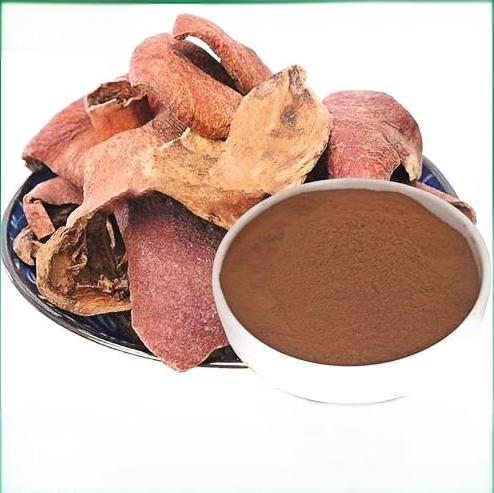
1.3 Organic acids
Caffeic acid, protocatechuic acid, ferulic acid and o-coumaric acid are the main components of the organic acids in pomegranate phenolic compounds. In addition, chlorogenic acid, neochlorogenic acid and p-coumaric acid are also included [19]. Li Guoxiu [19] detected various phenolic acid compounds in the organic solvent extraction method, such as protocatechuic acid, chlorogenic acid, caffeic acid, ferulic acid and gallic acid.
2 Extraction method of pomegranate peel polyphenols
The main methods for extracting plant polyphenols include thermal extraction, solvent extraction, ultrasound-assisted extraction, microwave extraction, supercritical CO2 extraction, enzymatic extraction and ultra-high pressure extraction. At present, the most commonly used methods for extracting pomegranate peel polyphenols are ultrasound-assisted extraction, solvent extraction, supercritical CO2 extraction and microwave extraction. In order to speed up the extraction of polyphenols and improve the extraction rate, the extraction method should be selected according to the extraction material.
2.1 Ultrasonic-assisted extraction method
The ultrasonic-assisted method uses ultrasound to create cavitation in the solvent, which causes the plant tissue to rupture and allows the solvent to penetrate the plant cells and dissolve their active ingredients. The advantages of ultrasonic-assisted extraction are high extraction efficiency, less damage to the active ingredients, and prevention of degradation or discoloration of the extract caused by prolonged exposure to high temperatures or air. It has been widely used to extract physiologically active ingredients, such as alkaloids [20-22]. Zhao Yanhong [23] optimized the ultrasonic extraction process of polyphenols from pomegranate peel by response surface methodology. Under the optimized conditions of extraction time 35 min, ethanol concentration 59%, and ultrasonic power 90 W, the extraction yield can reach 321 mg·g-1. In addition, Wang Huabin [24] and Jiao Shirong [25] increased the extraction rate of pomegranate peel polyphenols to 21.22% and 25.45%, respectively, by optimizing the process conditions of the ultrasound-assisted extraction method.
2.2 Solvent extraction method
Solvent extraction is a method for extracting active ingredients from plant tissues by selecting a solvent with high solubility for the active ingredients and low solubility for other ingredients based on the solubility of various active ingredients in the solvent [26]. The solvent extraction method for plant polyphenols is simple, stable and reliable, and is also suitable for extracting active ingredients from most Chinese medicinal materials in China. However, the consumption of organic solvents is high, the cost is high, and the pollution is serious. In this method, methanol, ethanol, acetone, and ethyl acetate, which have good solubility for polyphenols, are often used as solvents. There are no side reactions and they are easy to separate. Jia Dongying [26] used 20% ethanol as the solvent, with a solid-liquid ratio of 1:20, and extracted at 50 °C for 1 h, with a polyphenol extraction rate of 22.86%. Sun Lanping [27] used 50% ethanol with a liquid-to-material ratio of 25:1 and extracted at 70°C for 1.5 h, with a polyphenol extraction rate of 16.28%. Wang Xiaoyu [28] analyzed the effect of using organic solvents to extract total polyphenols. The results showed that the yield of polyphenols was methanol > ethanol > water > ethyl acetate.
2.3 Supercritical CO2 extraction
Supercritical fluid extraction is a method that uses solvent extraction and separation of supercritical fluids for the substance to be tested. This method is operated at near room temperature and is particularly suitable for the extraction of heat-sensitive natural substances and the separation of volatile substances. It is also suitable for the separation and extraction of solid substances. The commonly used solvent is CO2, which has excellent properties such as low viscosity, high diffusivity, high density, and strong solubility. Feng W.Q. [29] compared the extraction of gallic acid from pomegranate peel by supercritical CO2 extraction, ultrasonic extraction, microwave extraction and immersion extraction, and the gallic acid in the extract was 0.396%, 0.311%, 0.271% and 0.498%, respectively. From the above, it can be seen that supercritical CO2 extraction has a higher extraction efficiency.
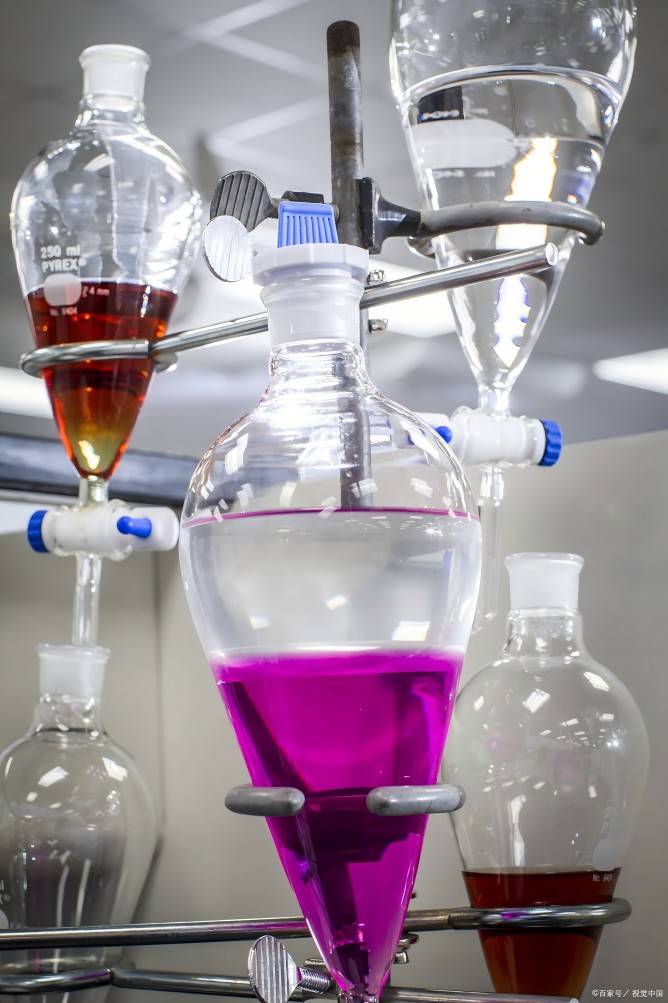
2.4 Microwave extraction method
Microwave-assisted extraction is known as a “green extraction process” and has many advantages, such as energy conservation, low pollution, high thermal efficiency, and no need for pretreatment such as drying. It simplifies the extraction process and reduces investment. It is often used to extract alizarin from plants and to carry out process monitoring and quality control of polymers and their additives. However, its equipment is expensive and maintenance is relatively cumbersome.
Tao Ming [30] compared the efficiency of three different extraction methods for extracting polyphenols from pomegranate peel, in order of microwave-assisted extraction > ultrasonic-assisted extraction > ethanol extraction. Song Weiwei [31] used optimized microwave-assisted extraction process conditions (40% ethanol, extraction power 242 W, time 60 s, liquid-to-solid ratio 1:5) to extract pomegranate peel polyphenols, yielding 19.54 g/100 g. Liu Hong [32] obtained a 26.91% extraction yield of pomegranate peel polyphenols under the conditions of 30% ethanol concentration, 1:20 solid-liquid ratio, 300 W extraction power, 60 ℃ extraction temperature and 100 s extraction time. This method shows that microwave-assisted extraction of polyphenols is fast and highly efficient.
3 Functions and applications of pomegranate polyphenols
Polyphenols were originally used in the manufacture of leather. As people continue to study their chemical structure and properties in depth, they have discovered that they have strong antioxidant and antibacterial effects. It has obvious preventive effects on many diseases, so plant polyphenols are widely researched and used in the food industry, biomedicine, household chemicals and other fields. For example, in some traditional ethnic medicines, pomegranate fruit is used to treat acidosis, dysentery, microbial infections, diarrhea, helminthiasis, bleeding and respiratory diseases, and plant polyphenols are called the “7th nutrient” after the sixth nutrient [33].
3.1 Antioxidant activity of pomegranate peel polyphenols
Many diseases such as tissue and organ aging are related to free radicals produced by metabolism in living organisms. Plant polyphenols contain a large number of phenolic hydroxyl groups and exhibit strong antioxidant activity. Therefore, the antioxidant activity and application research of pomegranate peel polyphenols has become a hotspot. Zhou Benhong et al. [34] showed that pomegranate peel extract can significantly reduce the harm of free radicals to the human body, and that the main antioxidant components are tannins and flavonoids.
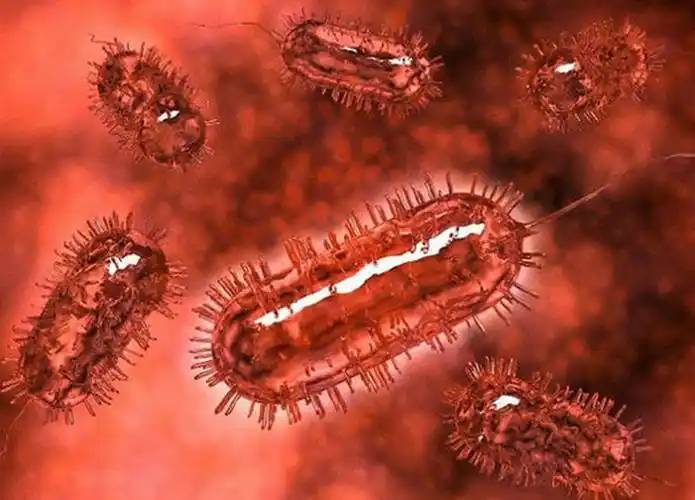
A comparative study of the antioxidant activity of 1,000 traditional Chinese medicines showed that pomegranate peel extract ranked among the top 4 in terms of antioxidant capacity, confirming that polyphenols are the main effective substance responsible for the antioxidant capacity of pomegranate peel [35]. Zhang Qian et al. [36] found that pomegranate peel extracts extracted with acetone, methanol, water and ethyl acetate, respectively, had high antioxidant activity. The polyphenol content in the extract was closely related to the antioxidant activity, and there was a clear dose-effect relationship. In addition, Zhou Qiang et al. [37] analyzed the free radical scavenging capacity of pomegranate peel polyphenol extract and its effect on cell proliferation. The study found that pomegranate peel polyphenols have a strong ability to scavenge free radicals and can be used as a natural antioxidant to scavenge free radicals produced by normal body metabolism. In addition, pomegranate peel polyphenols can induce apoptosis of PC12 cells in vitro and have good anti-tumor activity.
3.2 Antibacterial activity of pomegranate peel polyphenols
Polyphenols can inhibit the growth and reproduction of most bacteria and fungi by coagulating protoplasts and some enzymes in microorganisms. The rich polyphenols in pomegranate peel can inhibit the growth and reproduction of a variety of bacteria such as Shigella, Salmonella, Mycobacterium tuberculosis, Staphylococcus aureus, Pseudomonas aeruginosa, Escherichia coli, meningococci and other bacteria. [38] It also has a certain inhibitory effect on a variety of skin fungi. [39] Martionol et al. [40] reported that pomegranate peel methanol extract can inhibit Listeria monocytogenes, Staphylococcus aureus, Escherichia coli, Yersinia enterocolitica and Salmonella enterica. Lu Xueying et al. [41] showed that the active ingredient of pomegranate peel total polyphenols has a significant broad-spectrum inhibitory effect on common clinical pathogenic bacteria, and also has a significant inhibitory effect on some clinically drug-resistant pathogenic bacteria. In addition, polyphenols can directly damage the structure of viruses and indirectly inhibit virus replication, thereby preventing viral activity [41].
3.3 Anti-cancer activity of pomegranate peel polyphenols
Plant polyphenols are also a type of antimutagen, which can improve the ability of chromosome repair, reduce the carcinogenic effect of mutagens, thereby enhancing the body's immune system and inhibiting the growth of tumor cells. Ellagitannins extracted from pomegranate peel and its hydrolysate ellagic acid have anti-breast cancer effects [42]. Yang Bin et al. [43] used the MTI and Transwel methods to investigate the effect of pomegranate peel polyphenol crude extract on the proliferation and invasion of human cervical cancer Hela cells. The results showed that pomegranate peel polyphenol crude extract had a strong inhibitory effect on the proliferation and invasion of Hela cells, and the inhibitory rate increased with the increase of the concentration of pomegranate peel polyphenol crude extract. Lu Xueying et al. [41] separately tested the growth inhibition rates of pomegranate peel total polyphenol extracts extracted using different methods on the gastric cancer cell line BGC-823, the cervical cancer cell line Hela, and the colon cancer cell line SW-480, and found that the extracts with higher tannin content had a better inhibitory effect on cancer cells. In addition, pomegranate juice and isolated peel extract have important anticancer effects on prostate cancer cells [44]. It can be seen that pomegranate peel polyphenols have broad application value as potential experimental drugs for the treatment of tumors.
3.4 Other medicinal uses of pomegranate peel polyphenols
3.4.1 The role of pomegranate peel polyphenols in the prevention of cardiovascular disease
Pomegranate peel extract is rich in polyphenols, flavonoids and phytoestrogens, which have the function of scavenging free radicals. Therefore, it has strong antioxidant activity, can prevent thrombosis, inhibit the proliferation of smooth muscle cells on the arterial wall and reduce the incidence of hypolipidemia. Oxidation of low-density lipoprotein and an increase in high-density lipoprotein promote cholesterol metabolism, reduce the body's cholesterol synthesis rate, reduce blood lipids and liver fat, improve blood rheology and protect the cardiovascular system. Therefore, it can effectively prevent stroke, atherosclerosis, coronary heart disease, etc. [45]. In addition, pomegranate peel polyphenols also have anti-inflammatory and anti-atherosclerotic effects [46].
3.4.2 The role of pomegranate peel polyphenols in the prevention and treatment of gastrointestinal diseases
Pomegranate peel contains a large amount of tannins, which, when combined with proteins, can coagulate or precipitate the proteins to promote local wound healing and avoid irritation. Pomegranate peel extract can therefore stop bleeding, astringently treat the intestines and treat diarrhea [41]. Pomegranate peel extract can also play a role in the expulsion of intestinal parasites. In addition, animal experiments have shown that the polyphenols in pomegranate peel extract have a certain protective effect on the gastric mucosa, reducing the occurrence of gastric mucosal lesions and the irritation of the gastric mucosa by drugs and alcohol, thereby reducing the occurrence of gastric ulcers [47].
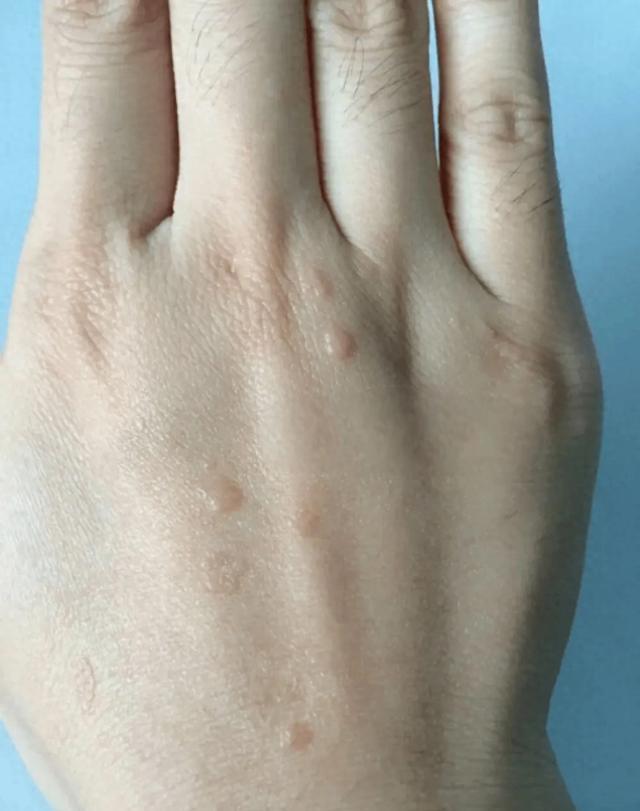
3.4.3 Pomegranate peel polyphenols can treat flat warts
Flat warts are benign skin growths caused by human papillomavirus infection. They are a common chronic refractory disease in dermatology. There are two main treatments for the disease: internal treatment and external treatment. Western medicine treatment has certain adverse reactions and contraindications. At present, there are no drugs specifically for flat warts, and some drugs are expensive, making it difficult for patients to persist with oral Chinese medicine. Therefore, the effectiveness of external treatment is gradually becoming more prominent. Pomegranate peel polyphenols contain a variety of alkaloids.
Antibacterial experiments have shown that pomegranate peel has a broad antibacterial spectrum and has a significant inhibitory effect on Staphylococcus aureus, hemolytic streptococcus, Vibrio cholerae, Shigella dysenteriae and Proteus mirabilis [48]. The lesions of flat warts are relatively shallow, and most of them are exposed on flat areas, which provides convenient conditions for hot compresses and wet compresses. Hot and wet compresses are made by applying pomegranate peel liquid directly to the skin wart, which can be absorbed directly and is easy to use. Compared with oral administration, it can avoid burdening the patient's gastrointestinal tract and avoid adverse reactions such as nausea and vomiting [49]. Wang Lirong [50] used hot and wet compresses made from fresh pomegranate peel to treat flat warts, and achieved significant healing effects.
3.4.4 Pomegranate peel polyphenols for treatment of tapeworm parasitic diseases
Taeniasis is a chronic parasitic disease caused by various tapeworms that parasitize the large and small intestines, seriously endangering the health of dogs. Experimental studies by Zhang Daifen [51] have shown that pomegranate peel has a strong killing effect on tapeworms and can act on the muscles of the worms, causing them to contract continuously. Using a 1:10,000 concentration of pomegranate alkaloids hydrochloride can kill tapeworms within 5 to 10 minutes. Clinically, it has been proven that the combination of alkaloids and tannins has a better anthelmintic effect, because tannins can make alkaloids into insoluble and poorly absorbed compounds, thereby fully exerting their effect of inhibiting intestinal parasites [52]. Pomegranate peel is inexpensive, has few side effects, is rich in alkaloids, and not only has antibacterial and antiviral effects and strengthens the immune system, but also suppresses the growth of tumor cells or induces their apoptosis.
4 Conclusion
Pomegranates are one of the edible fruits that can be used to treat and prevent many diseases. They are widely cultivated all over the world, especially in China, which has a long history and rich germplasm resources. Pomegranate peel polyphenols have a variety of medicinal values and can effectively treat diseases of the endocrine system, digestive system, reproductive system, and cardiovascular system. They also have good research value and broad development prospects in terms of antibacterial, antiviral, and antitumor effects. However, its pharmacological research is still unclear and has certain limitations, so it has not been widely used. Therefore, it is necessary to strengthen research on the phytochemical composition of pomegranates and their clinical applications, not only to further elucidate their pharmacological active ingredients and lay a good foundation for the development of new drugs, but also to improve their quality and ensure the safety of clinical drugs.
References:
[1] Xue Xiaozhen. Nutrition and uses of pomegranates in Xinjiang [J]. Instrumentation, Instrumentation and Analysis and Monitoring, 2002 (3): 44-45.
[2] Teng Biwei. Research and application progress of pomegranate peel [J]. Popular Science and Technology, 2013, 15 (2): 59-61.
[3]Nie g i P S ,Jayaprakasha G A,Jena B S.Antionxidant and anti-mutagenic activities of pomegranate peel extracts[J].Food Chem,2003, 80(3):393-397.
[4]Kim N D,Mehta R,Yu W P,et al.Chemoprewentive and adjuvant therapeutic potential of pomerganale (Punica granatum) for human breast cancer.Breast Cancer[J].Res Treat,2002,71:203-217.
[5]Ismail T,Sestili P,Akhtar S.Pomegranate peel and fruit extracts: a review of potential anti-inflammatory and anti-infective effects[J]. J Ethnopharmacol,2012,143(2):397-405.
[6]Dahham S S,Ali M N,Tabassum H,et al.Studies on antibacterial and anti-fungal activity of pomegranate (Punica granatum L.)[J].Am Eurasian J Agric Environ Sci,2010,9(3):273-281.
[7]Lansky E P,Newman R A.Punica granatum (pomegranate) and its polential for prevention and treatment of inflammation and cancer[J].J Ethnopharmacol,2007,109(2):177-206.
[8]Aviram M,Rosenblat M.Pomegranate protection against cardiovascular diseases[J].Evid Based Complement Alternat Med,2012,2012:1-20.
[9]Aviram M ,Volkova N,Coleman R,et al.Pomegranate phenolics from the peels, arils, and flowers are antiatherogenic: studies in vivo in atherosclerotic apolipoprotein E-deficient (EO) mice and in vitro in cultured macrophages and lipoproteins[J].JAgric Food Chem,2008,56(3):1148-1157.
[10] Wang Yuan. Extraction of polyphenols from pomegranate leaves and application in anti-aging cosmetics [D]. Kaifeng: Henan University, 2019.
[11] Han Lingling. Comparison of polyphenol components and content changes during pomegranate fruit development [D]. Tai'an: Shandong Agricultural University, 2013.
[12] Haslam. Plant Polyphenols-Vegetable Tannins Revisited [M]. Cambridge: Cambridge University Press, 1989.
[13] Shi B, Di Y. Plant polyphenols [J]. Beijing: Science Press, 2000.
[14] Zhonghua Ben Cao. Uyghur Medicine Volume [M]. Shanghai: Shanghai Science and Technology Press, 2005.
[15] Wang Rufeng, Xiang Lan, Du Lijun, et al. Chemical composition of pomegranate [J]. Asia-Pacific Traditional Medicine, 2006 (3): 61-70.
[16]No da Y ,K andyuk i T,Mori A,et al.Antioxidant activities of pomegranate fruit extract and its anthocyanidins:delphindin, cyan iding an d pelargon idin [J].Journal Agricultural Food Chem 2002,50(1):166-171. [17]Satya n and T ,Ajeet S ,Poona m B ,et al.Punicalagins-A large polyphenol compounds found in pomegranate: A therapeutic review[J]. Plant Sci,2012,5(2):45-49.
[18] Li Haixia, Wang Zhao, Liu Yanze. Research progress on the chemical composition and pharmacological activity of plants in the family Punicaceae [J]. Chinese Herbal Medicine, 2002 (8): 95-99.
[19] Li Guoxiu. Study on the isolation and identification of polyphenols in pomegranate and their antioxidant activity [D]. Xi'an: Shaanxi Normal University, 2008.
[20] Tian Xukun. Study on the extraction process of plant polyphenols [D]. Harbin: Harbin University of Science and Technology, 2019.
[21] Cai Jinxing, Liu Xiufeng, Li Zhaomeng, et al. Study on the extraction of strawberry pigments by microwave-ultrasonic method and their physicochemical properties [J]. Food and Fermentation Industry, 2003 (5): 69-73.
[22] Li Yunyang, Song Guangsen. Study on the extraction of chestnut shell pigments with the aid of ultrasound [J]. Food Science and Technology, 2003 (8): 57-58, 65.
[23] Zhao Yanhong, Li Jianke. Response surface method to establish a mathematical model for the extraction of pomegranate peel polyphenols with the aid of ultrasound [J]. Journal of Agricultural Products Processing, 2009 (3): 126-131.
[24] Wang Huabin, Bao Xiaowei, Han Haixia, et al. Study on the extraction process of polyphenols from pomegranate peel in Xinjiang [J]. Food and Machinery, 2010, 26 (5): 137-140.
[25] Jiao Shirong, Wang Ling, Chen Mingxia, et al. Ultrasonic-assisted extraction of total polyphenols from pomegranate peel and its antioxidant activity [J]. Journal of Xihua University: Natural Science Edition, 2009, 28(1): 60-62, 80.
[26] Jia Dongying, Yao Kai, Tan Wei, et al. Optimization of polyphenol extraction conditions from pomegranate peel [J]. Forest Chemical Industry, 2006, 26(3): 123-126.
[27] Sun Lanping, Zhang Bin, Zhao Daqing, et al. Optimization of alcohol extraction process of polyphenols from pomegranate peel [J]. Packaging and Food Machinery, 2007, 25(4): 20-23, 29.
[28] Wang Xiaoyu, Gao Xiaoli, Mahemuti Maerdan. Experimental study on the extraction of polyphenols from pomegranate peel in Xinjiang [J]. Chinese Ethnic and Folk Medicine, 2008, 18(1): 8-10.
[29] Feng Wqun, Li Hui. Comparison of 4 methods for extracting gallic acid from pomegranate peel [J]. Traditional Chinese Medicine Herald, 2008 (8): 16-17.
[30] Tao Ming, Luo Xi, Chen Chao, et al. Study on the extraction method of polyphenols from the pomegranate peel of Huili [J]. Liaoning Chemical Industry, 2012, 41 (10): 991-993.
[31] Song Weiwei, Jiao Shirong, Zhou Jia, et al. Microwave-assisted extraction of polyphenols from pomegranate peel and study of the antioxidant and antibacterial effects of the extract [J]. Modern Food Science and Technology, 2008 (1): 23-27.
[32] Liu Hong, Ao Bo, Fan Shuhui, et al. Experimental study on the microwave extraction of polyphenols from pomegranate peel in Huili, Sichuan [J] Food and Fermentation Industry, 2008
(26): 11172-11173, 11178.
[33] Ling Guanting. Polyphenols, known as the “seventh nutrient” [J]. China Food Additives, 2000 (1): 28-37.
[34] Zhou Benhong, Wang Huiyuan, Guo Zhilei, et al. The scavenging effect of punicalagin on hydroxyl radicals and superoxide anions [J]. Chinese Journal of Hospital Pharmacy, 2008 (17): 1442-1445.
[35] Saito K, Kohno M, Yoshizaki F, et al. Extensive screening for edible herbal extracts with potent scavenging activity against superoxide anions [J]. Plant Foods for Human Nutrition, 2008, 63(2): 65-70.
[36] Zhang Qian, Jia Dongying, Yao Kai, et al. Antioxidant effect of pomegranate peel extract [J]. China Oils and Fats, 2006 (8): 51-54.
[37] Zhou Q, Zhao X, Sun J, et al. Antioxidant properties of pomegranate peel polyphenols and their effects on PC12 cell proliferation [J]. Journal of Taishan Medical College, 2019, 40(5): 331-335.
[38] Jiangsu College of Traditional Chinese Medicine. Encyclopedia of Traditional Chinese Medicine [M]. Shanghai: Shanghai Science and Technology Press, 1986.
[39]Yoshimura M ,Watanabe Y ,KasaiK ,et al.Inhibitory effect of an ellagic acid-rich pomegranate extracton tyrosinase activity and ultraviolet-induced pigmentation [J].Bio sci Biotechnol Biochem,2005,69(12):2368-2373.
[40]Martiono l V,Morales J.Two ellagitann is from the leaves of Terminalia triflora with inhibitoryactivity on HIV-1 transcriptase[J]. Phytothera- py R esearch,2004,18(8):667-669.
[41] Lu Xueying, Re Yimugu Li Yandong, et al. Antioxidant, antibacterial and antitumor activities of the effective part of total polyphenols in pomegranate peel from Xinjiang [J]. Food Science, 2012, 33 (9): 26-30.
[42]Boukharta M,Jalbert G,Gastonguay A.Efficacy of el-lagitannins and ellagicacid as caner chemopreventive agents[J].Bull. Liaison-group Polyphenols,1992,16(1):245-249.
[43] Yang Bin, Li Wanping, Lou Xiaoming, et al. Extraction of polyphenols from pomegranate peel and its effect on human cervical cancer HeLa cells [J]. Shandong Medicine, 2010, 50(24): 50-51.
[44]Chaves F M,Betim Pavan I C,dSilva L G S D,et al.Pomegranate Juice and Peel Extracts are Able to Inhibit Proliferation, Migration and Colony Formation of Prostate Cancer Cell Lines and Modulate the Akt/mTOR/S6K Signaling Pathway[J].Plant foods for human nutrition, 2019,75(13):1-9.
[45]Reed J,Flavonoids C.Atherosclerosis and Cardio-vascular health[J].Crit Rev Food Scrutiny,2002,42(3):301-316.
[46]Amany A S, Naglaa M I, Mandy B D.The Anti-inflammatory and Antiatherogenic In Vivo Effects of Pomegranate Peel Powder: From Waste to Medicinal Food[EB/OL].(2020-04-21)[2019- 10-01].https://www.liebertpub.com/doi/10.1089/ jmf.2019.0269.
[47]Gharzo u K,Khen nouf S,Amira S,et al.Effects of aqueous extracts from quercus ilex L. root bark, punica granatum L, fruit peel and artemisia herbaalba asso leaves on ethanol induced gastric damage in rats[J]. Phytother. Res,1999(13):429-451.
[48] Huang Siqi. Study on the chemical composition and antibacterial activity of combined pomegranate peel [D]. Nanjing: Nanjing Agricultural University, 2017.
[49] Zeng Tingting, Zhaoritu, Wu Lilong, et al. Pharmacological effects and clinical application of pomegranate peel [C]//Proceedings of the 6th Annual Conference on Clinical Chinese Pharmacy 2013 and the Exchange Conference on the Construction of the Discipline of Clinical Chinese Pharmacy, 2013.
[50] Wang Lirong. Treatment of 8 cases of flat warts with fresh pomegranate peel compresses [J]. Chinese Clinical Research, 2011, 24(9): 862.
[51] Zhang D, Deng Y, Xing K. Observation of the effect of pomegranate peel in expelling canine tapeworms [J]. Sichuan Animal Husbandry and Veterinary Medicine, 2010, 37(9): 19-21.
[52] National Pharmacopoeia Commission. Pharmacopoeia of the People's Republic of China 2015 Edition [S]. Beijing: China Medical Science and Technology Press, 2015.


 English
English French
French Spanish
Spanish Russian
Russian Korean
Korean Japanese
Japanese